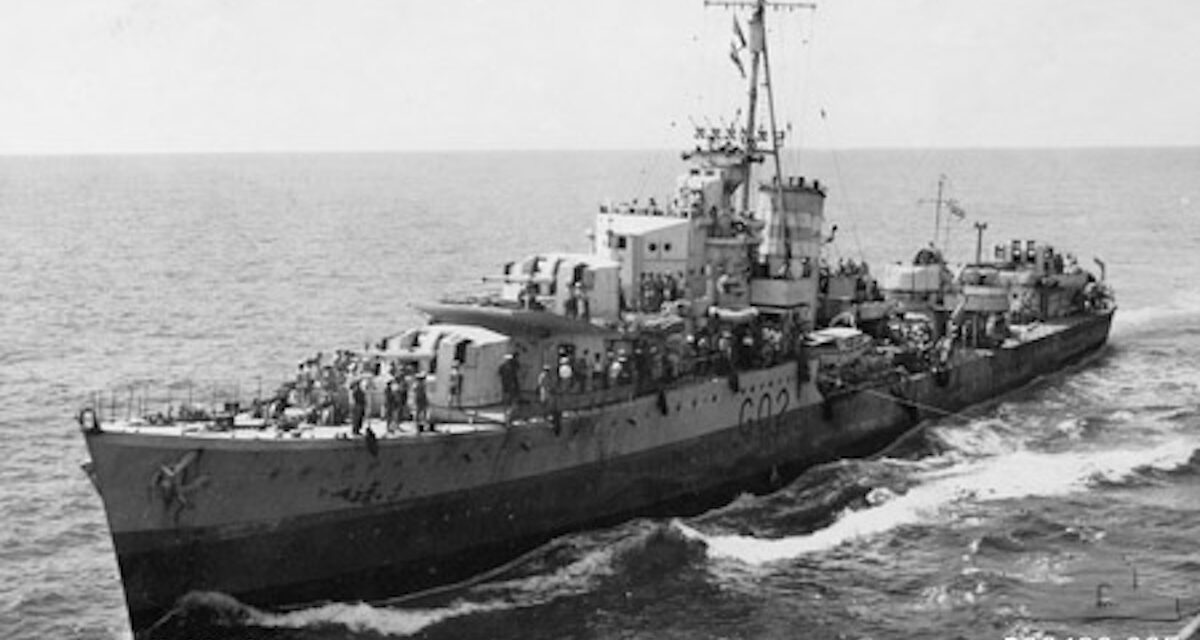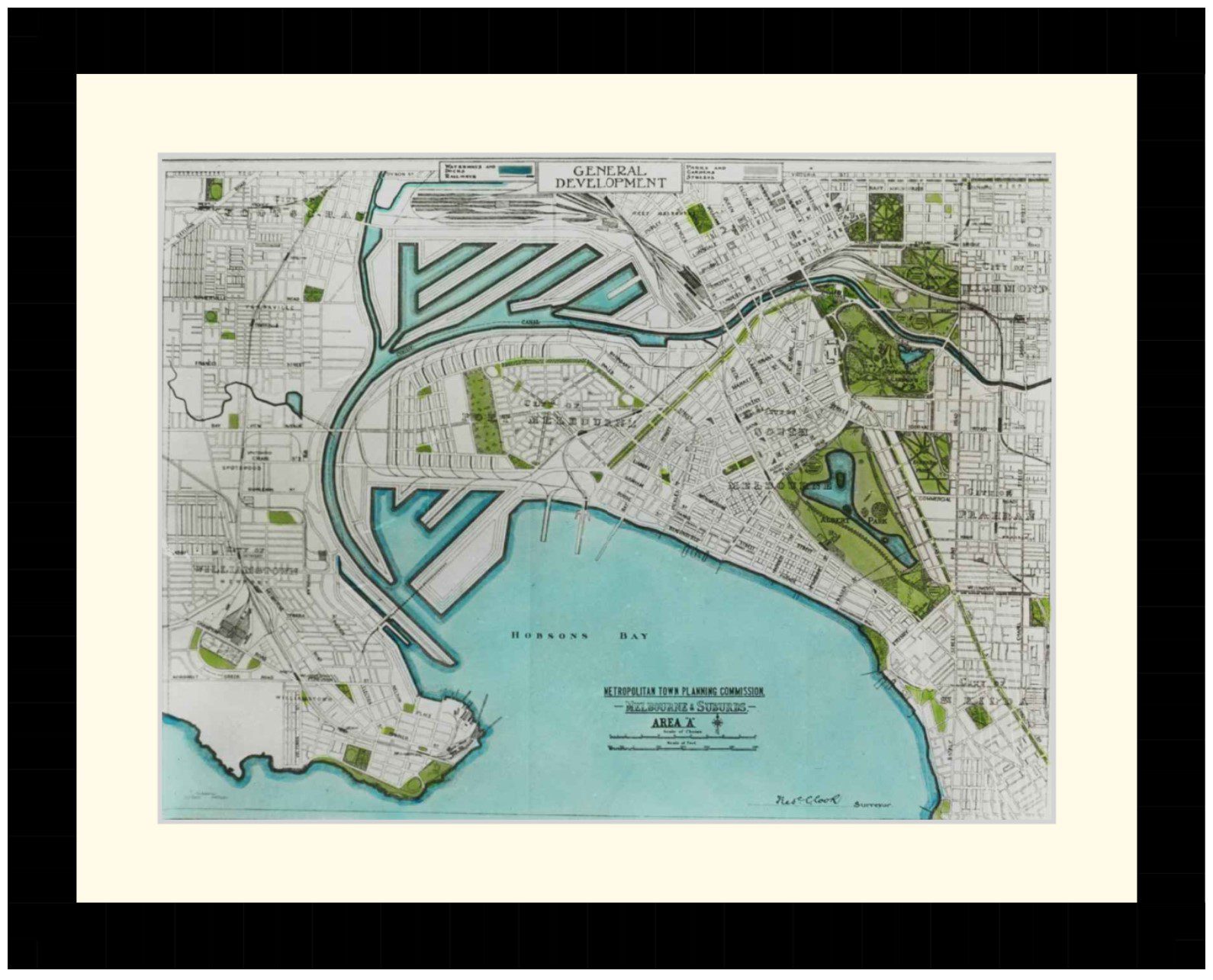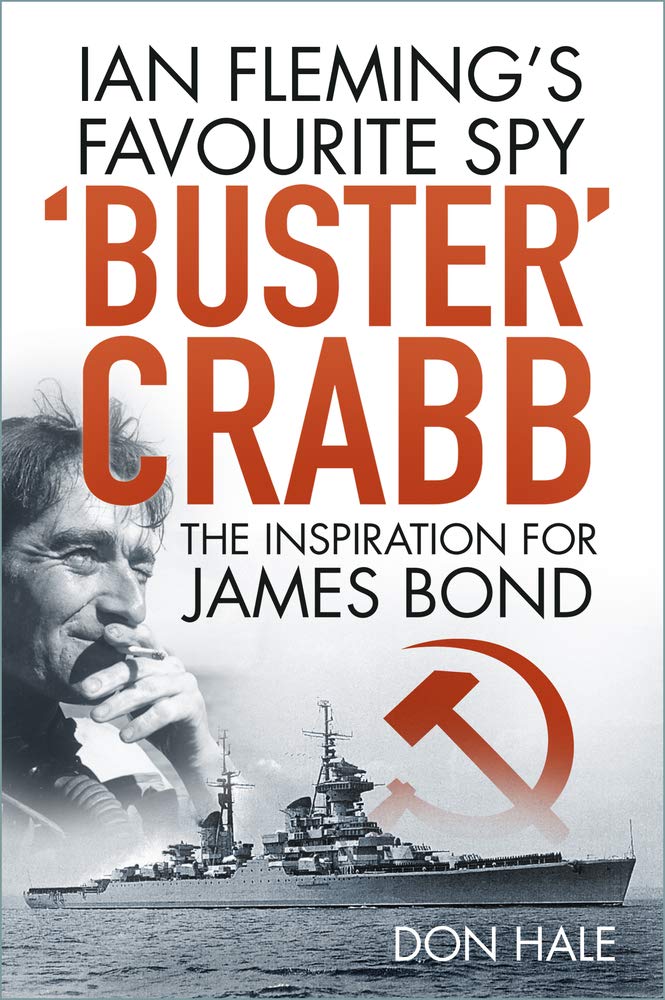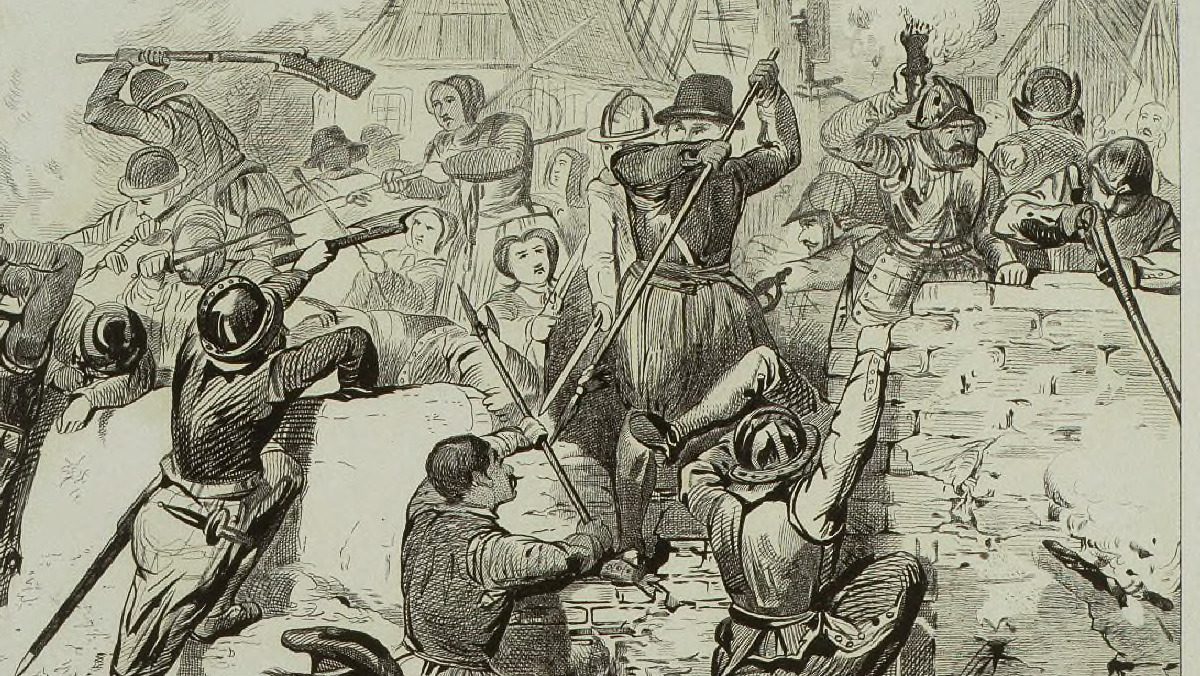Reading time: 16 minutes
A convoy of 11 merchant ships escorted by 56 warships and submarines was making its way through “bomb alley” to deliver precious supplies to the besieged garrison on Malta. HMAS Nestor was just one of these warships assigned to protect this vital convoy. It was June 15, 1942, and this would be the last sunset the destroyer would ever see.
By Nathan Drescher
The end of the day was like most evenings in the eastern Mediterranean; balmy with a beautiful sunset in the west and light chop on the blue waves. Convoy MW11 had fought off a massive Italian battle fleet over the preceding 24 hours, and had sustained a day of intense German dive bombing. HMAS Nestor had been in the thick of it and had survived the gruelling ordeal thus far, but around 19:00 ten Italian SM-79 tri-motor bombers appeared and made a high-level bombing run on the convoy.
Three 1,000-pound bombs bracketed the Nestor. Two bombs hit the sea just meters from either side of the destroyer and lifted her stern wholly out of the water. The third bomb impacted just behind her. Holes were torn in the ship and water flooded into boiler room 1. All four men in the room were killed. The nearby British destroyer, HMS Javelin, attempted to tow the Nestor to safety but she was taking on too much water. The next morning the Australian destroyer had to be scuttled.
HMAS Nestor served for a little over a year. From the time it was commissioned in early 1941 to its demise in mid-1942, the destroyer served in three theaters of war, was the first Australian vessel to sink a U-boat, helped hunt the Bismark, and earned four battle honours. This is the tale of a truly remarkable Australian warship.
N-Class destroyers
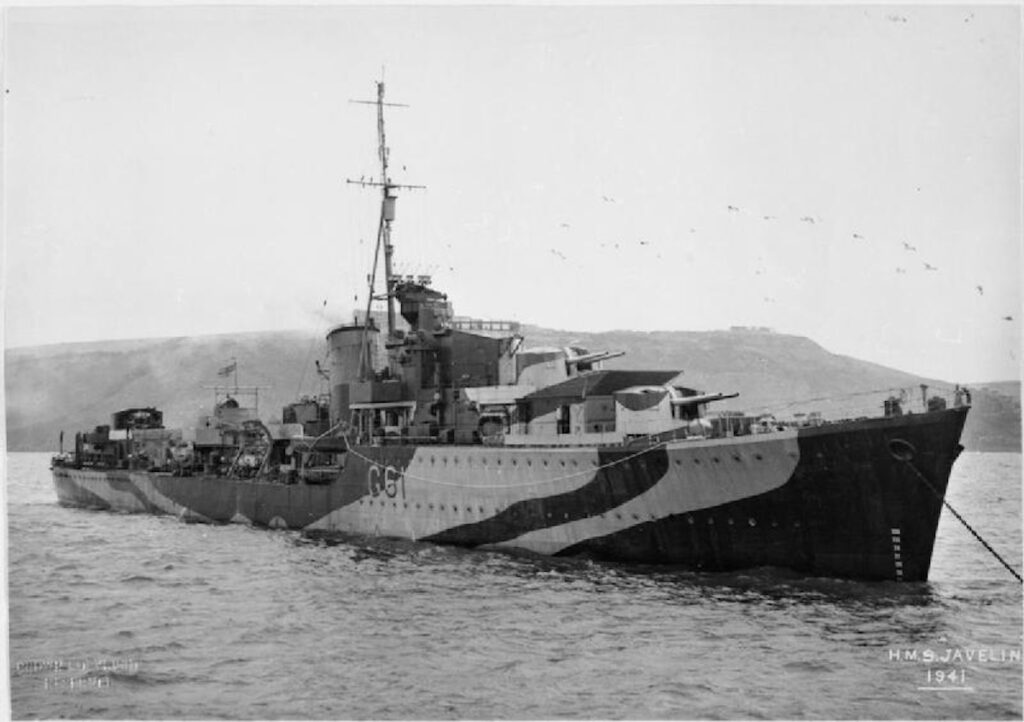
HMAS Nestor was an N-class destroyer. This class was first conceived of in late 1938 as a return to smaller destroyers emphasizing torpedoes rather than guns. Unlike the Tribal-class destroyers, which comprised the bulk of the Royal Navy destroyer fleet, the N-class featured two boiler rooms separated by a bulkhead. Not only would this mean the ship could continue under power if one of the boilers were damaged, but it also allowed for a single smokestack. This reduced its outline and gave its 0.5-inch quad-mounted Bofors anti-aircraft guns a greater firing arc.
Another major difference from the Tribal class was the straight-edged bow of the N-class. This would prove a mistake, as these ships gained a reputation for pounding into waves and the front was extremely wet. It also slowed them down in all but the calmest seas.
The N-class destroyers had three 4.7 inch (120 mm) guns mounted in turrets: two in the front and one in the rear of the ship. Its main armament, however, was its two quintuple torpedo launchers firing salvos of 21 inch (533 mm) torpedoes. It also had a single rack of depth charge throwers, a two-pounder AA gun, and two Bofors AA guns. The ships were retrofitted with radar and fire control computers in late 1940.
These were modern and incredibly powerful destroyers, and as a result, they would be extensively used in all theaters. The UK also built several for other countries, including the Netherlands, Poland, and Australia.
The Royal Australian Navy (RAN) purchased five N-class destroyers between 1939 and 1940, one of which was the HMAS Nestor. Like the other N-class ships, Nestor was built in Scotland. She was first laid down in late 1939, just after the outbreak of war. It took a year for Fairfield Shipbuilding to finish construction, and she launched on July 9, 1940. The daughter of the shipyard director launched her with the breaking of a bottle of champagne against her bow while the dockworkers and their families cheered.
Australians take possession
The Royal Australian Navy commissioned the Nestor on February 3, 1941. Commander George Stewart, RAN, captained the ship along with 182 other officers and enlisted men, most of whom were reservists. The men had been in England for several months prior as they finished up their training on Royal Navy ships, and must have been overjoyed to board a ship of their own.
But life aboard a working destroyer was to be no picnic. HMAS Nestor began sea trials in the cold North Sea in the middle of winter. She was based in the miserable dark port of Scapa Flow along with the British Home Fleet and part of her sea trials involved guarding the approaches from German U-Boats. Commander Stewart drank heavily, and was often absent, fast asleep in his quarters. His two most senior officers were often with him.
The enlisted men mutinied and locked themselves below decks, refusing to come out. British Royal Marines had to board the Nestor and arrest the offending officers. Commander Stewart was relieved of command and Commander Alvord Rosenthal, RAN, replaced him.
Commander Rosenthal was an experienced officer who had served with the Royal Navy throughout the first two years of the war. He quickly apprised himself of the situation, put the crew at ease, and soon had the HMAS Nestor working at a high level. The crew enjoyed sailing under their new captain.
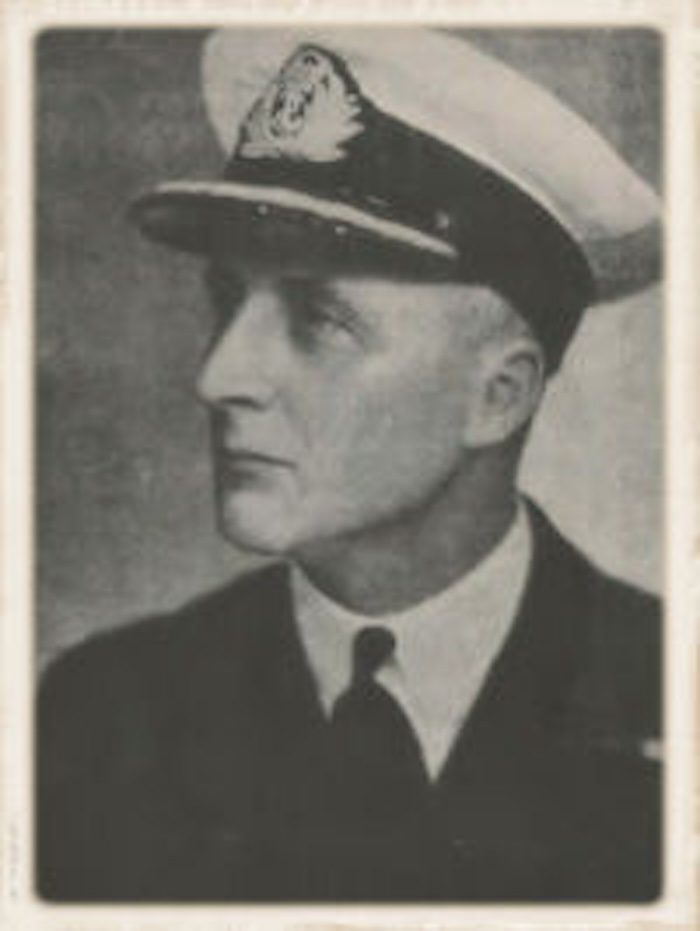
Nestor’s first highly-secret mission
HMAS Nestor was deployed on a few short convoy escort patrols throughout April, 1941, guarding Iceland-bound ships as they passed through the North Sea. But her first real mission came in early May as part of Operation EC (ii).
A British cryptologist working out of Bletchley Park discovered the German weather ships, who monitored weather conditions for naval and air operations, carried the mysterious Enigma coding machine aboard. More importantly, they would have the codebooks the machine used to decode messages.
A task force was assembled to capture the German trawler Munchen, who was operating in the Arctic circle. HMAS Nestor joined several destroyers and light cruisers for this mission. A mysterious British civilian joined the Nestor for this mission. He kept to himself for most of the journey north.
The Munchen was sighted on May 7th and the cruiser force quickly captured her before she could radio a warning back to Germany. The Enigma machine was recovered, and the mysterious passenger found the codebooks and stored them in a briefcase handcuffed to his wrist. HMAS Nestor then raced back to Scotland to deliver the man safely to shore.
These codes allowed the Royal Navy to decipher German U-Boat communications for half of the summer that year. Convoys sailed without incident for all of July as a result. The crew of the Nestor didn’t have any down time before they were dispatched to join the entire Royal Navy Home Fleet in a desperate hunt for the mighty German battleship Bismarck.
Hunt for the Bismarck
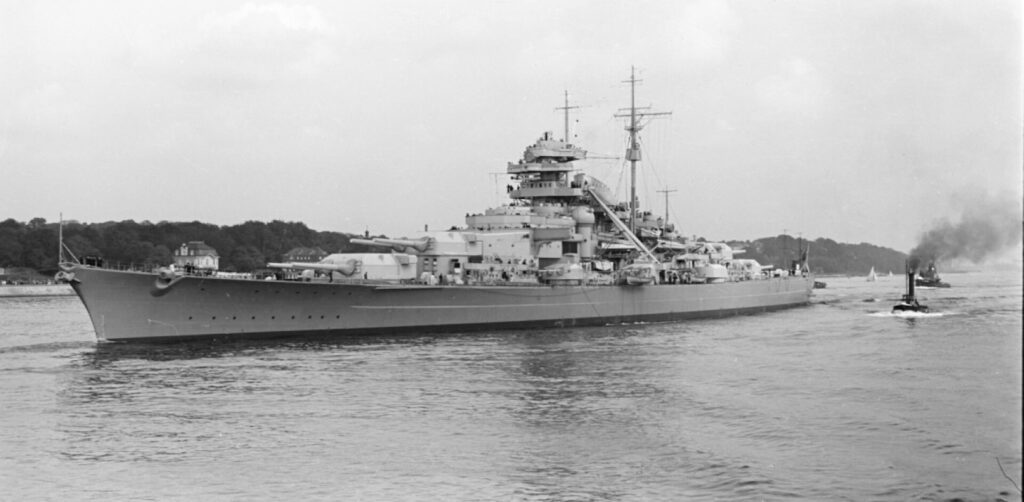
The Bismarck was one of the heaviest battleships of the German High Seas Fleet. She had broke out into the north Atlantic in early May along with the battlecruiser Prinz Eugen, heading for the vulnerable convoy routes.
These two mighty warships ran into the HMS Hood and HMS Prince of Wales on 24 May, two of England’s most prized warships. The Hood in particular was famous as it had travelled the world and wowed audiences during flag ceremonies in ports all across the empire. But she was no match for the Bismarck.
The two ships opened fire on each other at a range of 26 km. The Bismarck’s eight massive 15-inch guns plunged 800 kg shells down onto the Hood, and the famed ship exploded in an enormous fireball. 1,400 men went down with her, and only three survived.
The Prince of Wales, a newly built battleship, hit the Bismarck several times but her shells did little damage to the heavily armoured German monster. The Bismarck and Prinz Eugen blasted the Prince of Wales, killing many on the bridge and knocking out several of her turrets. Then they fled over the horizon. The Prince of Wales limped back to safety.

The world was shocked at the loss of the Hood. Morale in England was already low. German bombers were still bombing English cities every night. There were food and coal shortages as convoys struggled to get through the U-Boat blockade. It was important for the Royal Navy to avenge the Hood.
The Home Fleet sailed in pursuit of the Bismarck. HMAS Nestor, along with four other RAN destroyers, joined them.
But the Bismarck managed to evade the fleet for longer than anticipated and the tiny RAN N-Class destroyers were soon running low on fuel and food. The Nestor turned away from the hunt after only a few days and made for Iceland for refueling. As a result, she would miss out on the final drama when the Royal Navy finally caught up to the Bismarck.
Swordfish torpedo bombers from the carrier HMS Victorious swarmed the Bismarck, knocking out her rudder and propellers and bringing the ship to a standstill. British warships then pounded the stricken German battleship with everything they had, eventually sinking her after several hours of shelling. Most of her crew were killed. The Prinz Eugen managed to slip away back to France.
The Malta convoys
HMAS Nestor was transferred to the Mediterranean in July and began escorting convoys to the beleaguered garrison on Malta. She encountered her first submarine while approaching Gibraltar.
“At 0245 a submarine was sighted on the surface closing rapidly on the starboard quarter; the alarm was given to the guns but almost immediately a torpedo track was sighted approaching. NESTOR turned away, the torpedo passing close astern, and then went in to attack. Two deliberate attacks [with guns] were carried out and then contact lost. In company with ENCOUNTER the area was searched until daylight with no results.”
Ship’s diary, HMAS Nestor, 24th July 1941.
Her first convoy of seven merchantmen left Gibraltar on 21st July and HMAS Nestor, along with the battleship HMS Nelson and four other British destroyers, soon ran into trouble.
The convoy was spotted by Italian submarines. Two torpedoes were seen approaching Nestor but they went underneath her. The destroyer had just narrowly avoided disaster. Italian bombers from Sardinia were soon swarming over the convoy and HMAS Nestor was heavily engaged.
Her crew sent out a wall of flak as Italian torpedo bombers and high level bombers swooped in from multiple directions. One torpedo narrowly missed the Nestor and passed parallel along her starboard side. One of the British destroyers, HMS Fearless, wasn’t so lucky and was hit and sunk. HMS Firedrake was heavily damaged and had to return to port. The attack was over by noon without the loss of any of the merchantmen.
“…a well synchronized high level and torpedo bombing attack was carried out on the convoy. MANCHESTER was hit by a torpedo and ordered to return to Gibraltar. FEARLESS was also struck by a torpedo and was eventually abandoned and sunk….NESTOR was narrowly missed by one which passed down the starboard side, drastic avoiding action being taken.”
Ship’s diary, HMAS Nestor, 23rd July 1941.
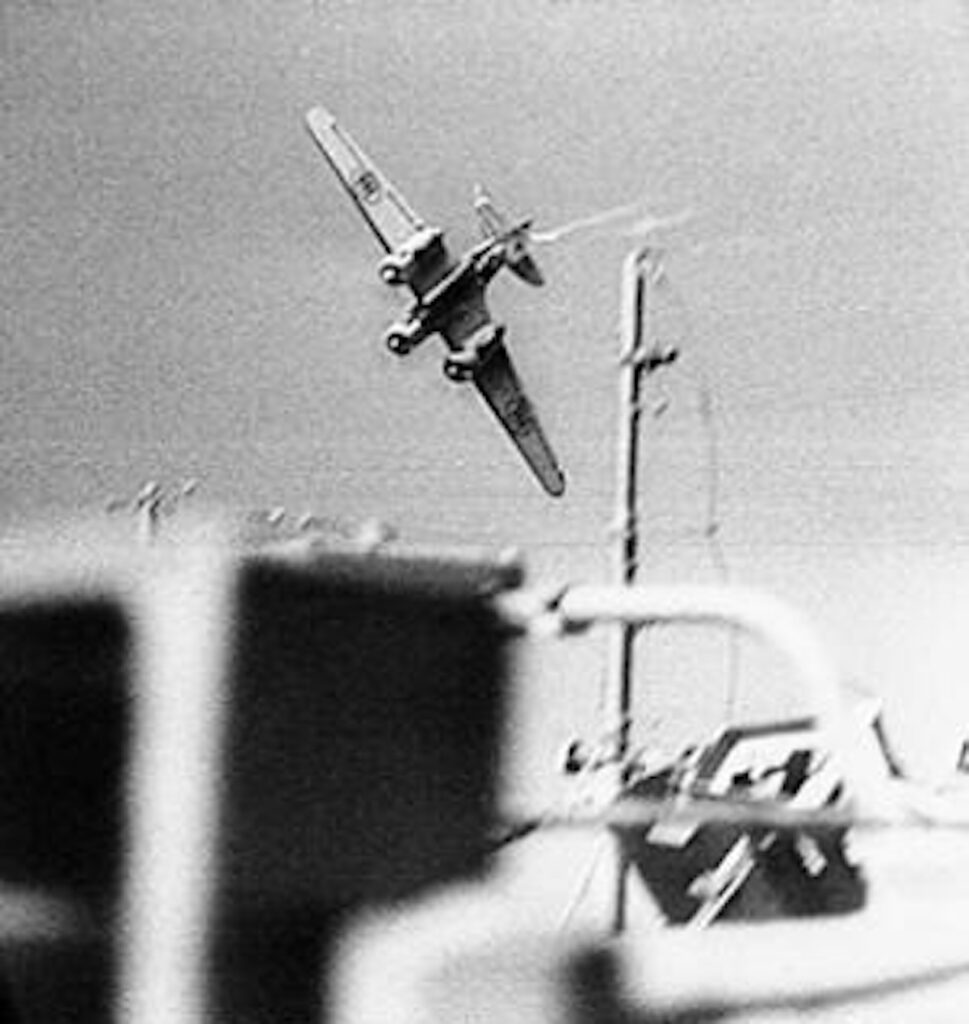
The ordeal was not over. A flight of Stukas dove on the convoy and Nestor narrowly missed being bombed while several machine gun bullets hit the Australian destroyer, including Rosenthal’s quarters. However, nobody was hurt and the ship was undamaged.
“At 1000 an attack was carried out on HERMIONE, NESTOR and SYDNEY STAR by a group of Junker 87s approximately 12 in number. NESTOR was attacked by one plane, which released two bombs, one 20 yards to port abreast 4″ gun, and 20 yards to starboard, abreast funnel; neither exploded on hitting the water. The ship was also machine-gunned, but no casualties were caused. The ship’s side was pierced in one place, where two bullets entered the commanding officer’s sleeping quarters.”
Ship’s diary, HMAS Nestor, 27th July 1941.
Alarm bells were ringing the men out of their bunks at three in the morning as a small fleet of Italian torpedo boats zoomed in to attack the convoy. The Sydney Star, one of the merchantmen, was hit and damaged. Nestor pulled alongside and 470 British army soldiers were transferred aboard. She then escorted the damaged ship to port. Along the way a British Fulmar torpedo plane crashed into the sea nearby, so the Nestor stopped to pick up the crew. They made it to port at Malta without further incident. Commander Rosenthal was awarded a Distinguished Service Order.
“At about 0300 an E-boat attack was made on the convoy…the SYDNEY STAR was struck and fell out of the line. Observing this, NESTOR proceeded alongside and transferred 470 Army officers and men, thence escorting SYDNEY STAR to Malta at about 14 knots.”
“At about 1600 a Fulmar crashed into the sea, having been in action with enemy aircraft. NESTOR picked up the crew and then rejoined the screen on the fleet.”
Ship’s diary, HMAS Nestor, 24th July 1941.
Nestor was damaged during her next convoy run when one of her depth charges exploded prematurely. She had to return to England for repairs and refit, and soon joined her sister ship, the newly commissioned N-Class destroyer HMAS Norman.
Atlantic convoys
HMAS Nestor found herself reassigned to convoy duty in the south Atlantic following her harrowing ordeal in the Mediterranean. A German U-Boat surfaced on the night of 15 December and attacked the convoy HMAS Nestor was escorting. Nestor opened up with A and B turrets, hitting the U-boat several times.
The German submarine crash dived. Nestor had the vessel on her ASDIC and along with two other destroyers made several depth charge passes. The ocean exploded and debris from the U-Boat was spotted. An oil slick and more debris appeared, indicating the destruction of the German submarine. Rosenthal, now lovingly nicknamed “Rosie” by the crew, received a bar to his DSO for the sinking of U-127.
“…a submarine was sighted on the surface about 7 miles to the southward. Course was immediately altered towards and speed increased to 21 knots. At a range of 11000 yards, fire was opened by “A” and “B” mountings. Two salvos were fired and before they had landed, the submarine submerged. At 1115 a firm contact was obtained and a deliberate attack carried out. FOXHOUND then closed the position, and when over the spot, felt a heavy explosion below her. This was also felt in NESTOR. This was at first thought to be from FOXHOUND attacking but this ship did not fire depth charges….At 1300 the position where the first attack took place was closed, and a large oil patch and wreckage discovered.”
Ship’s diary, HMAS Nestor, 15th December 1941.
To the Far East
HMAS Nestor returned to Scapa Flow in late December, 1941 for a refit and upgrade to some of her equipment. She left port again on Christmas Eve, heading back to the Mediterranean where she joined several other destroyers and the HMS Indomitable, a Royal Navy carrier with 50 Hurricanes on board.
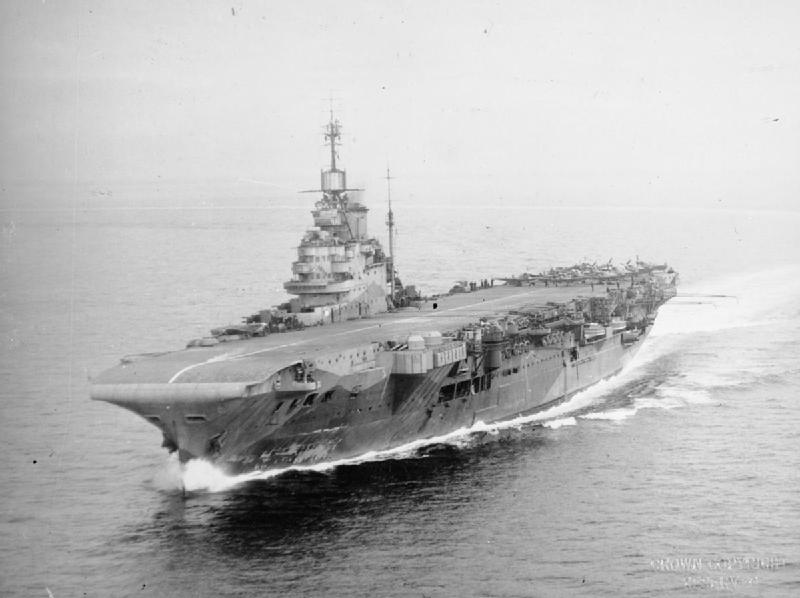
The convoy left Alexandria on 3rd January and slipped through the Suez Canal, heading for the Indian Ocean. Their goal was to deliver these Hurricanes to Malaya, which the Empire of Japan had recently invaded. The fleet reached the eastern Indian Ocean by late January and ran into a tropical storm, delaying the launch of the Hurricanes and hindering refueling, but by 29th January all the Hurricanes had flown off and the Nestor docked at Colombo.
“At 1000 the weather being unfavourable for flying at Java, the flying off of Hurricanes was postponed and course altered to the westward. At 1115 an air escort of one Catalina from Batavia joined. At 1500, the weather appearing suitable, the first batch of 16 Hurricanes flew off, escorted by two Blenheims. The assembling speed of Hurricanes on board INDOMITABLE did not come up to expectations, and no more aircraft flew off that night, the operation being delayed until the next morning.”
Ship’s diary, HMAS Nestor, 27th January 1942.
Nestor operated in the Indian Ocean for several months, conducting patrols and guarding the waterways around Ceylon. However, the fall of Singapore to the Japanese changed the strategic situation in the far east. The Japanese also sank the battlecruisers HMS Prince of Wales and HMS Repulse, as well as the British carrier HMS Hermes, significantly reducing the strength of the Royal Navy in the east. Nestor was given orders to return to Alexandria in June, 1942.
Operation Vigorous
Malta remained as the only Allied outpost in the central Mediterranean, and it was under non-stop air assault from the German and Italian air forces. It was vital to keep the garrison there supplied.
On 11th June 1942 a convoy of 11 supply ships and 50 warships assembled off the coast of Egypt, bound for Malta. HMAS Nestor joined this massive fleet, codenamed MW11, for Operation Vigorous. The entire operation was under the command of Admiral Phillip Vian, RN. It was an enormous fleet.
- Eight cruisers
- 26 destroyers
- Four corvettes
- Nine submarines
- Four torpedo boats
There were also several supply ships and minesweepers attached to the convoy, in addition to the 11 merchant ships loaded with food, fuel, munitions, and other supplies needed on Malta.
MW11 set out for the island in the middle of the Mediterranean. The first night the convoy was attacked by 15 Ju-88s who flew out from Crete. They damaged one of the torpedo boats but the convoy was otherwise unhindered.
British fighters were able to escort the convoy during the day while they were still within range of Egypt, but on the night of 13 June, German planes dropped flares over the convoy, illuminating the force. British bombers struck German airfields on Crete in response, but then the 8th Army in Libya was routed and in full retreat. The RAF air cover was suddenly lost and the convoy was on its own.
150 Luftwaffe planes swarmed in and MW11’s ordeal began. JU-87 Stuka dive bombers and Ju-88s sunk one of the merchant ships and damaged another. The periscope from a German submarine was spotted and several torpedoes were fired at the convoy, all of which missed.
During the evening of 14th June, the Italian fleet was spotted steaming for the convoy, now in the open water of the central Mediterranean. Two Italian battleships, four cruisers, and several escorting destroyers were fast approaching. Admiral Vian ordered the convoy to turn around and head back to Egypt.
RAF bombers from Malta attacked the Italian fleet, and they were joined by nine American B-24 heavy bombers. The crews reported wild successes and Vian, believing the Italian threat had been neutralized, ordered the convoy to turn back towards Malta. MW11 turned around once again.
The last day of HMAS Nestor
Unfortunately, the aircrews had failed to hit a single Italian ship, and the first heavy cruisers were spotted on the horizon as the convoy was turning around. Five British destroyers bravely attacked the heavy warships while HMAS Nestor and the other ships continued to screen the convoy. Two of these British destroyers were sunk by heavy shellfire from the Italian cruisers. Another hit a mine and had to be scuttled.
The Italian cruisers turned back, probably to rejoin the battleships, which steamed much more slowly. German Stuka dive bombers took their place and concentrated their attacks on the convoy’s warships.
One Stuka was shot down by flak but the cruiser HMS Airedale was heavily damaged while the cruiser HMS Aldenham was sunk. The air attacks were unrelenting, with wave after wave of Axis planes taking their turn on the convoy.
Then, as evening settled over the Mediterranean, ten Italian bombers appeared. HMAS Nestor was holed several times and her boiler rooms flooded. The crew were transferred to the HMS Javelin, a RN destroyer, and Nestor was tied up to her stern. Javelin attempted to tow the Australian ship to safety, but she was taking on too much water.
On the morning of 16th June the decision was made to scuttle her. Depth charges were blown in her hull amidships and she sank below the waves in a few minutes.

A truly remarkable little ship
The four men who had been killed by the Italian bombing had been recovered and their remains sent back to Australia. Commander Rosenthal was awarded the Distinguished Service Cross following Operation Vigorous.
Rosenthal’s next assignment would be as naval attache to the Australian embassy in Washington, DC. He was an experienced destroyer captain and was able to help the USN ramp up their anti-submarine operations. He went on to command the Australian Naval Reserves after the war, and was awarded the Order of the British Empire in 1956.
HMAS Nestor was the only Australian warship to have never sailed in Australian waters. This, despite being one of the most well travelled Australian ships, with more than 90,000 nautical miles logged.
The ship remains on the bottom of the Mediterranean, roughly 150 km off the coast of Tobruk, Libya. However, her bell was salvaged and can be seen today at the museum at HMAS Cerberus.
Podcast Episodes about HMAS Nestor
Articles you may also like
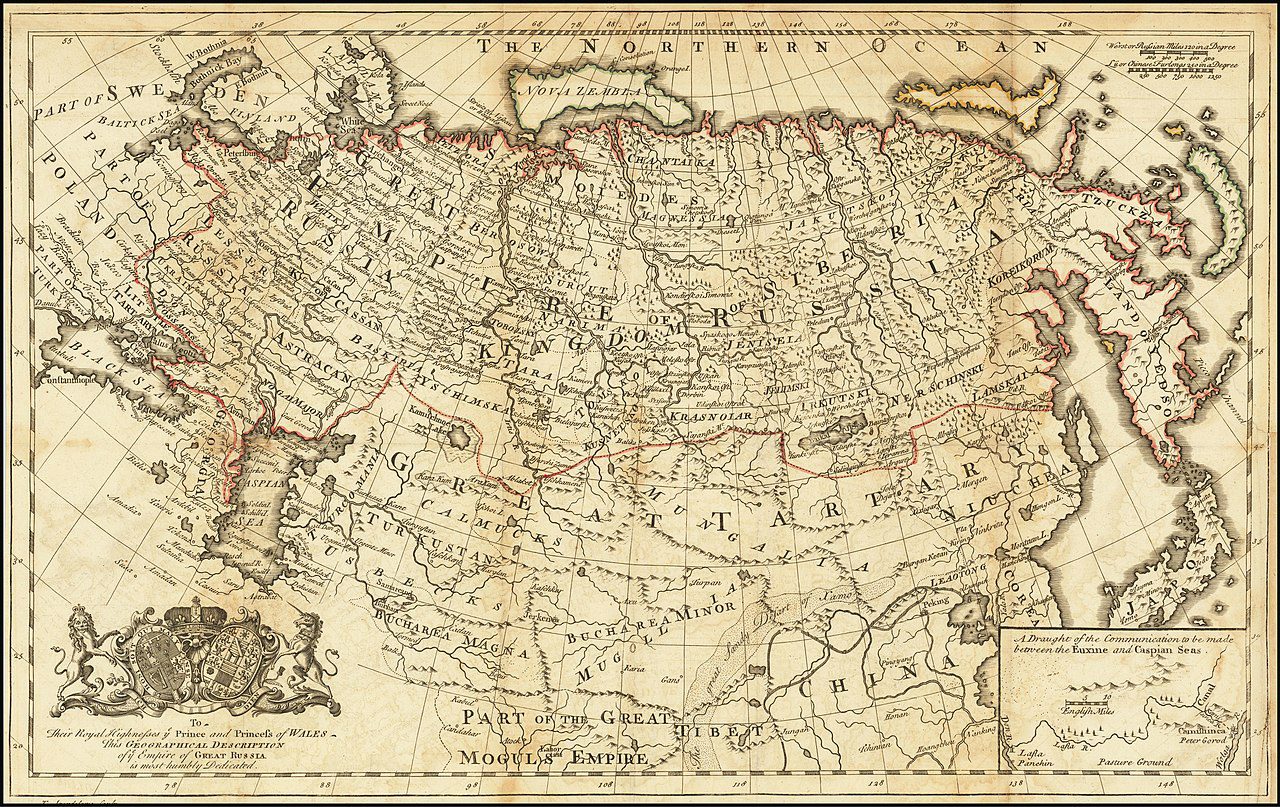
General History Quiz 83
1. Which Russian empress led a rebellion against her husband, Peter III and successfully took power?
Try the full 10 question quiz.
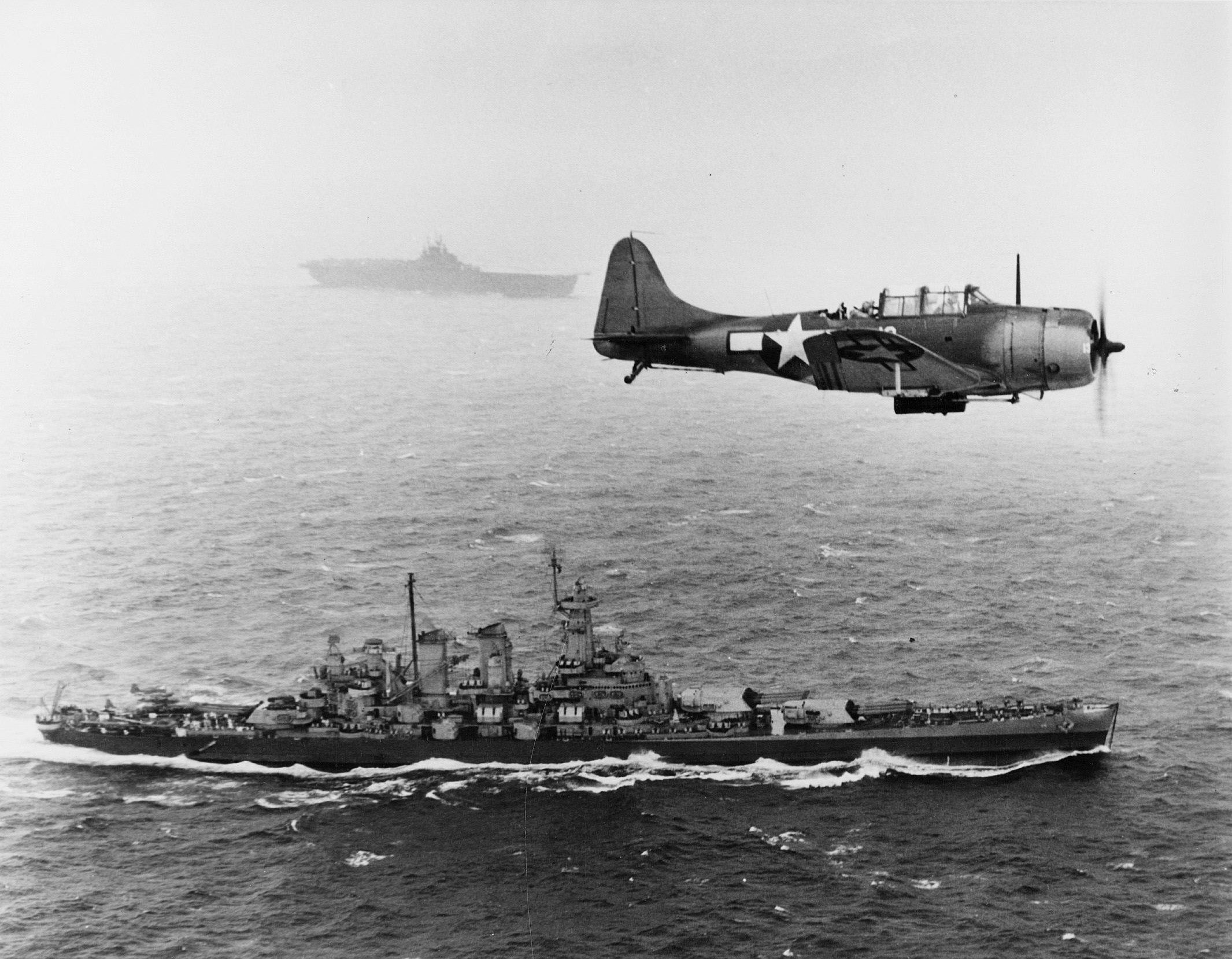
Early Raids Of the Pacific War
Less than two months after the devastating surprise attack at Pearl Harbour, the US Navy was on the offensive. They carried out several raids on Japanese territory in the Pacific. The Raid on the Marshall and Gilbert IslandsFebruary 1, 1942 The first offensive operation by Task Forces of the United States Pacific Fleet in the […]
The text of this article was commissioned by History Guild as part of our work to improve historical literacy. If you would like to reproduce it please get in touch via this form.

